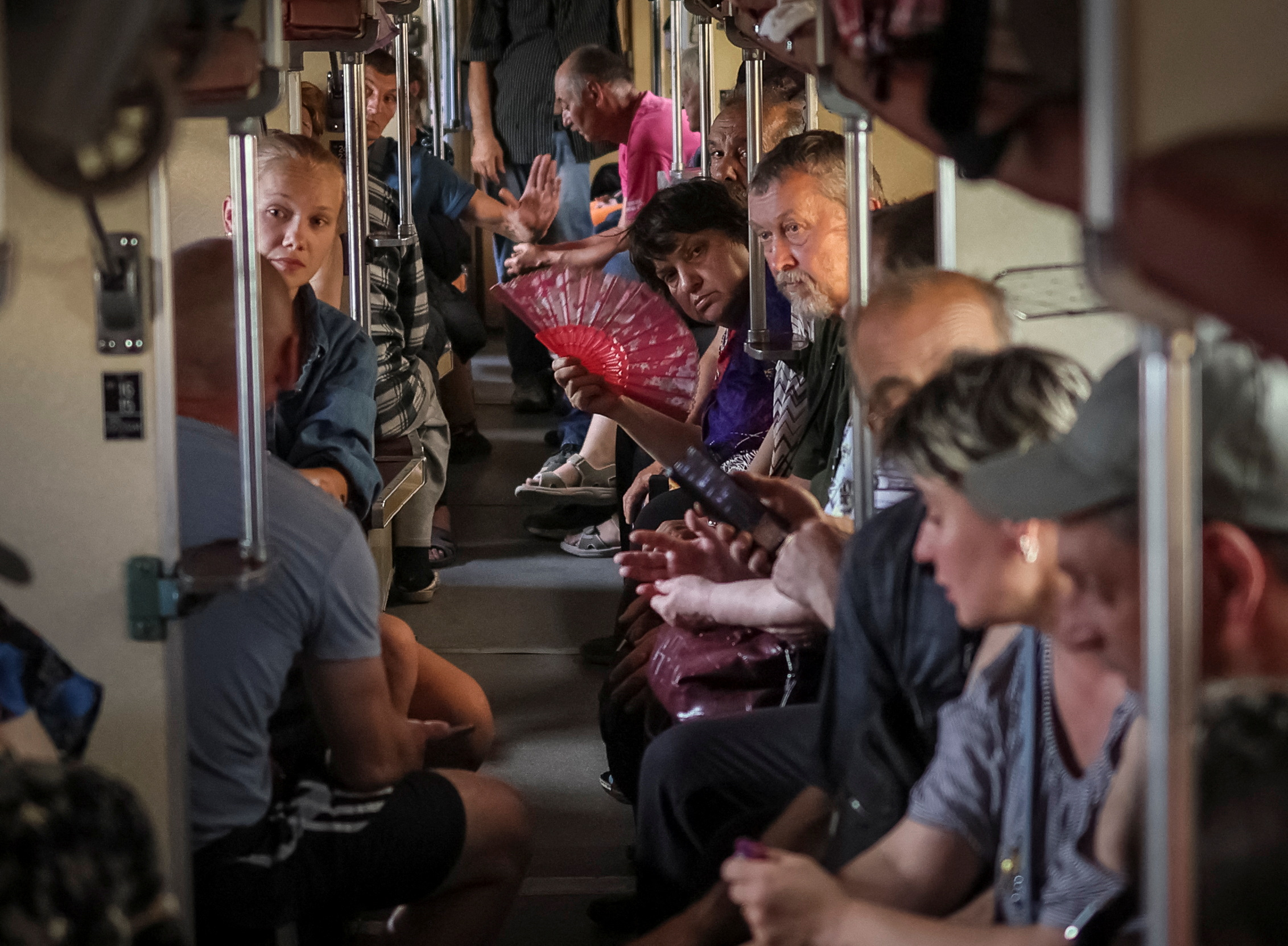
Lauren Moye, FISM News
[elfsight_social_share_buttons id=”1″]
The U.S. has fulfilled its commitment to house Ukrainians and others fleeing Russian aggression by housing more than 100,000 people from the war-torn region since March, according to the Department of Homeland Security.
President Joe Biden promised that the U.S. would take in 100,000 Ukrainian refugees on March 24. Until now, the number of displaced individuals taken in by the U.S. had been unknown, a fact that was highlighted in recent criticism of a “slow and cumbersome” refugee program in a Washington Post opinion piece.
The United for Ukraine program only guaranteed temporary residency for two years, after which Ukrainians would potentially be stranded with no way to get home or to gain citizenship, the Washington Post noted.
However, recent reports show that the U.S. has fulfilled its pledge.
CBS News first reported the government data that claimed, “approximately 47,000 Ukrainians have come to the U.S. on temporary or immigrant visas; nearly 30,000 Ukrainians arrived under a private sponsorship program; more than 22,000 Ukrainians were admitted along the U.S.-Mexico border; and 500 Ukrainians entered the country through the traditional refugee system, the data show.”
“We will continue to welcome additional Ukrainians in the weeks and months to come, consistent with President Biden’s commitment,” DHS Secretary Alejandro Mayorkas told CBS News.
There “was never a cap” to the number of displaced Ukrainians the U.S. would take in, Mayorkas said, and DHS was “deeply proud to provide refuge” for these individuals.
However, the future does remain uncertain for most of these refugees. Those under an immigrant visa or the traditional refugee program are the only ones who have a legal track to apply for permanent residency and eventually U.S. citizenship.
The sponsorship program, designed with the idea that Ukrainians would want to return to their home country after the war, has instead been given special humanitarian parole that allows for Ukrainian citizens to live and work in the U.S. for the next two years. Those who crossed the southern border also received this parole status.
Meanwhile, those with temporary visas do not have a clear path to citizenship. However, all Ukrainians can officially seek asylum on U.S. soil to help remedy this.
In the meantime, daily life in the U.S. for the refugees has varied widely. Wood TV, a California news station, reported that volunteers had provided English courses, surfing lessons, other recreational opportunities, and legal help to Ukrainian refugees. However, some refugees have had trouble adjusting to life.
One mother said her 5-year-old son still had nightmares from the early days of the invasion when the family was forced to take refuge in bomb shelters to escape Russian shelling. Others who spoke to Wood TV said that the price of housing and cars coupled with a need for credit history made it difficult to move forward in the U.S.
Volunteers and donated resources have eased the transition for many Ukrainians in the U.S. One heartwarming story published by a Washington-based ABC station told of a man who traded a car to a refugee family for a Sharlotka apple cake, rather than depleting the family’s limited funds.
Emmanuel Ferran said he wanted to help because his mother, too, had once sought refuge in a foreign country when she fled from the El Salvador civil war as a child.
“She described to me how tough it is and she also described the helping hand that she’s had,” Ferran said of his mother.
